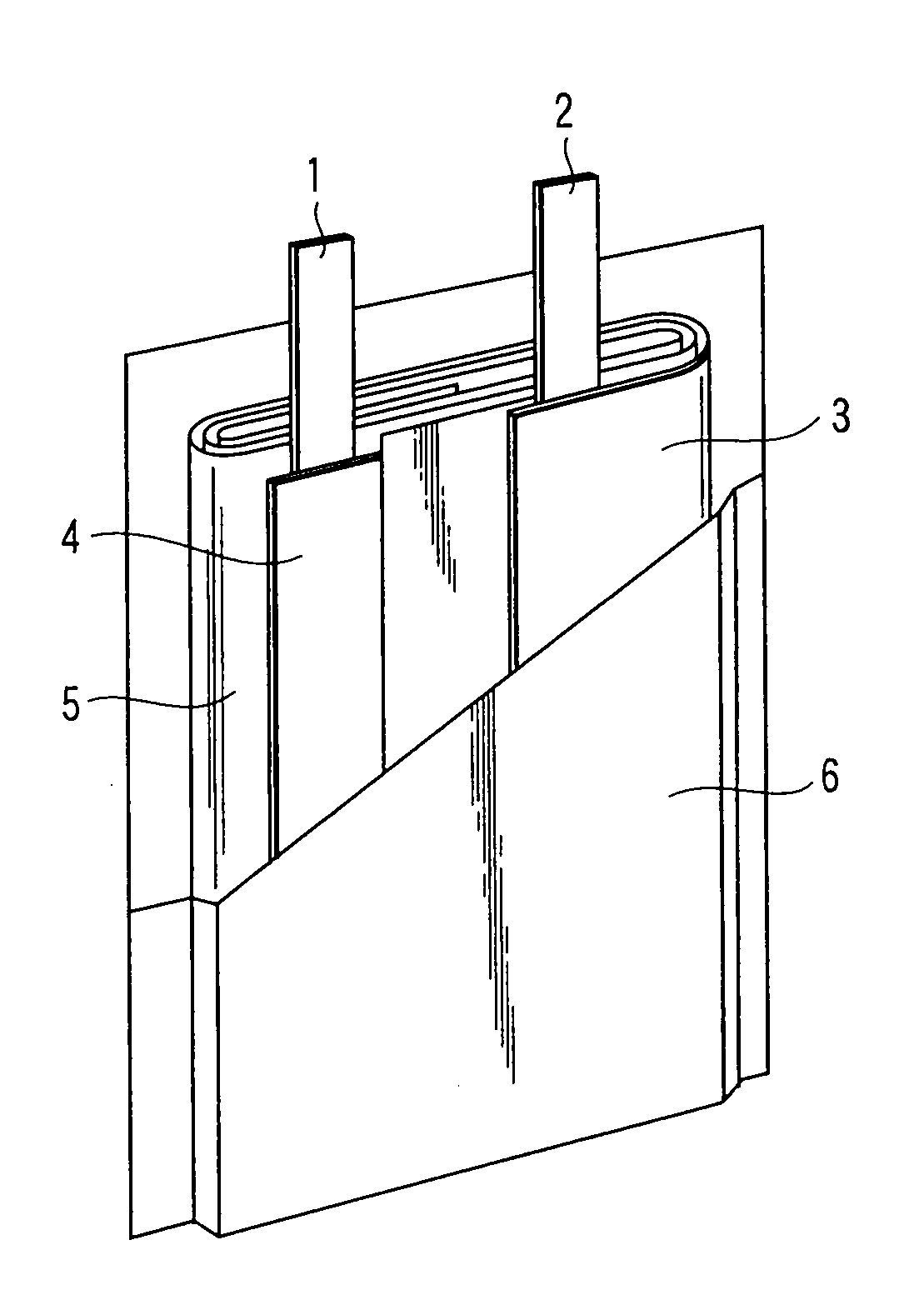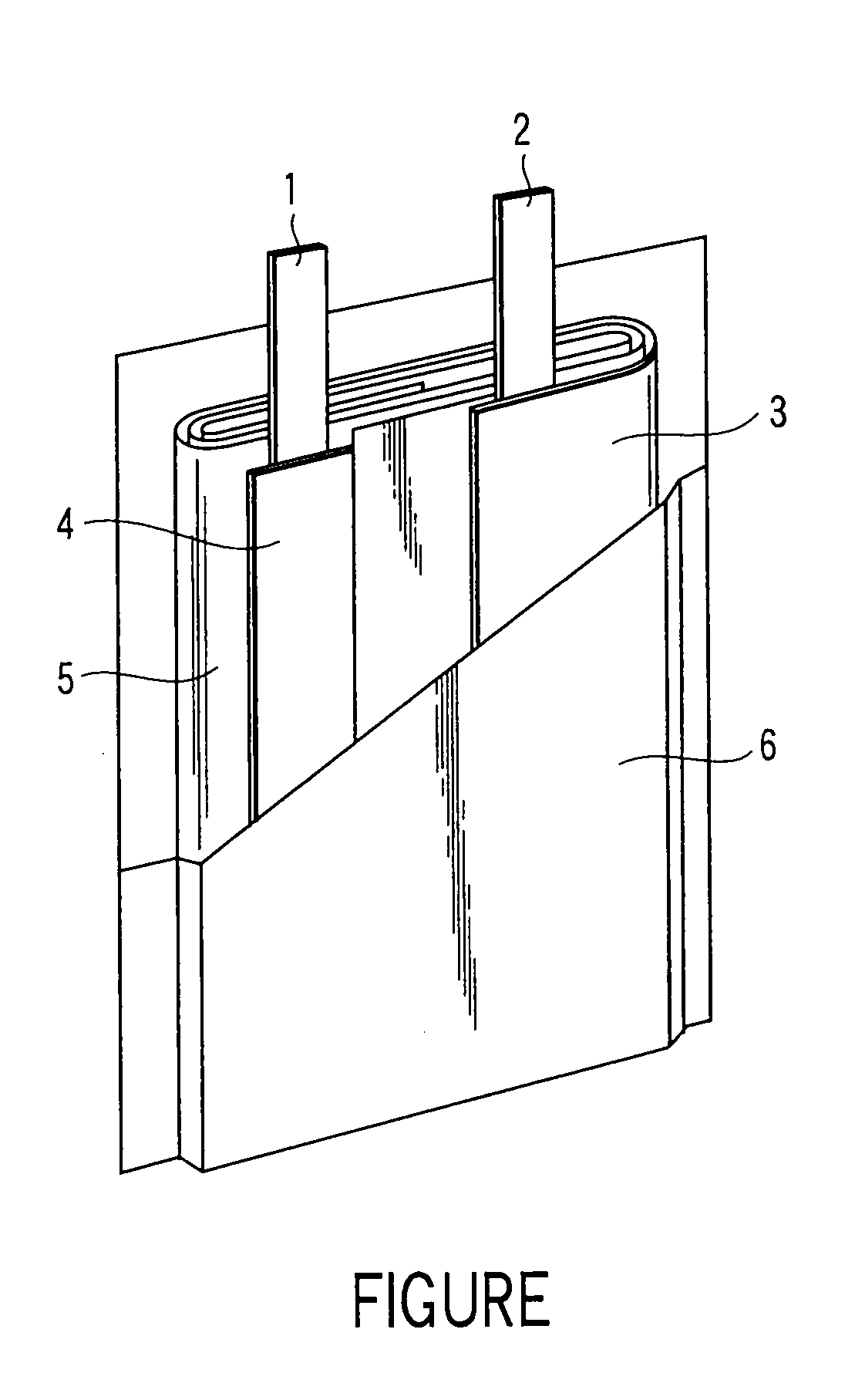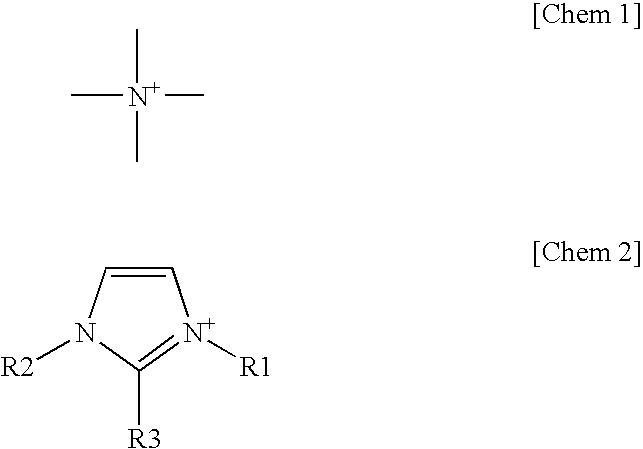Nonaqueous electrolyte battery
a technology of electrolyte battery and non-aqueous electrolyte, which is applied in the direction of non-aqueous electrolyte cells, cell components, cell component details, etc., can solve the problems of inferior battery under heavy current and extremely low battery characteristics, so as to reduce the binding strength of compound layer and current collector, the effect of lowering the current collecting performan
- Summary
- Abstract
- Description
- Claims
- Application Information
AI Technical Summary
Benefits of technology
Problems solved by technology
Method used
Image
Examples
example 1
[0093]A battery having the structure shown in FIG. 1 was fabricated. Examples 2 to 4 and Comparative examples 1 to 4 are same in structure as shown in FIG. 1.
[0094]By blending 90 wt. % of lithium cobalt oxide (LiCoO2) as an active material, 3 wt. % of acetylene black, 3 wt. % of graphite, and 4 wt. % of polyvinylidene fluoride (PVdF) in n-methylpyrrolidone (NMP), a slurry was prepared. The slurry was applied on both sides of a current collector made of an aluminum foil of 15 μm in thickness, and dried and pressed, and a positive electrode with electrode density of 3.0 g / cm3 was prepared.
[0095]By blending Li4Ti5O12 as a negative electrode active material, coke with average particle size of 1.12 μm and specific surface area of 82 m2 / g as an electronic conductor, and polyvinylidene fluoride (PVdF) by a ratio of 90:5:5 by weight, the mixture was dispersed in n-methylpyrrolidone (NMP) solvent, and a slurry was prepared. The obtained slurry was applied on an aluminum foil of 15 μm in thic...
example 2
[0103]A nonaqueous electrolyte secondary battery same as in Example 1 was manufactured except that the electronic conductor was replaced by coke of which average particle size is 3.37 μm, specific surface area is 25.7 m2 / g, spacing (d002) of (002) plane is 0.3472 nm, and crystallite size (Lc) in the C-axis direction is 1.90 nm.
example 3
[0104]A nonaqueous electrolyte secondary battery same as in Example 1 was manufactured except that the electronic conductor was replaced by coke of which average particle size is 5.87 μm, specific surface area is 12.7 m2 / g, spacing (d002) of (002) plane is 0.3443 nm, and crystallite size (Lc) in the C-axis direction is 1.90 nm.
PUM
| Property | Measurement | Unit |
|---|---|---|
| crystallite size | aaaaa | aaaaa |
| crystallite size | aaaaa | aaaaa |
| crystallite size | aaaaa | aaaaa |
Abstract
Description
Claims
Application Information
 Login to View More
Login to View More - R&D
- Intellectual Property
- Life Sciences
- Materials
- Tech Scout
- Unparalleled Data Quality
- Higher Quality Content
- 60% Fewer Hallucinations
Browse by: Latest US Patents, China's latest patents, Technical Efficacy Thesaurus, Application Domain, Technology Topic, Popular Technical Reports.
© 2025 PatSnap. All rights reserved.Legal|Privacy policy|Modern Slavery Act Transparency Statement|Sitemap|About US| Contact US: help@patsnap.com



